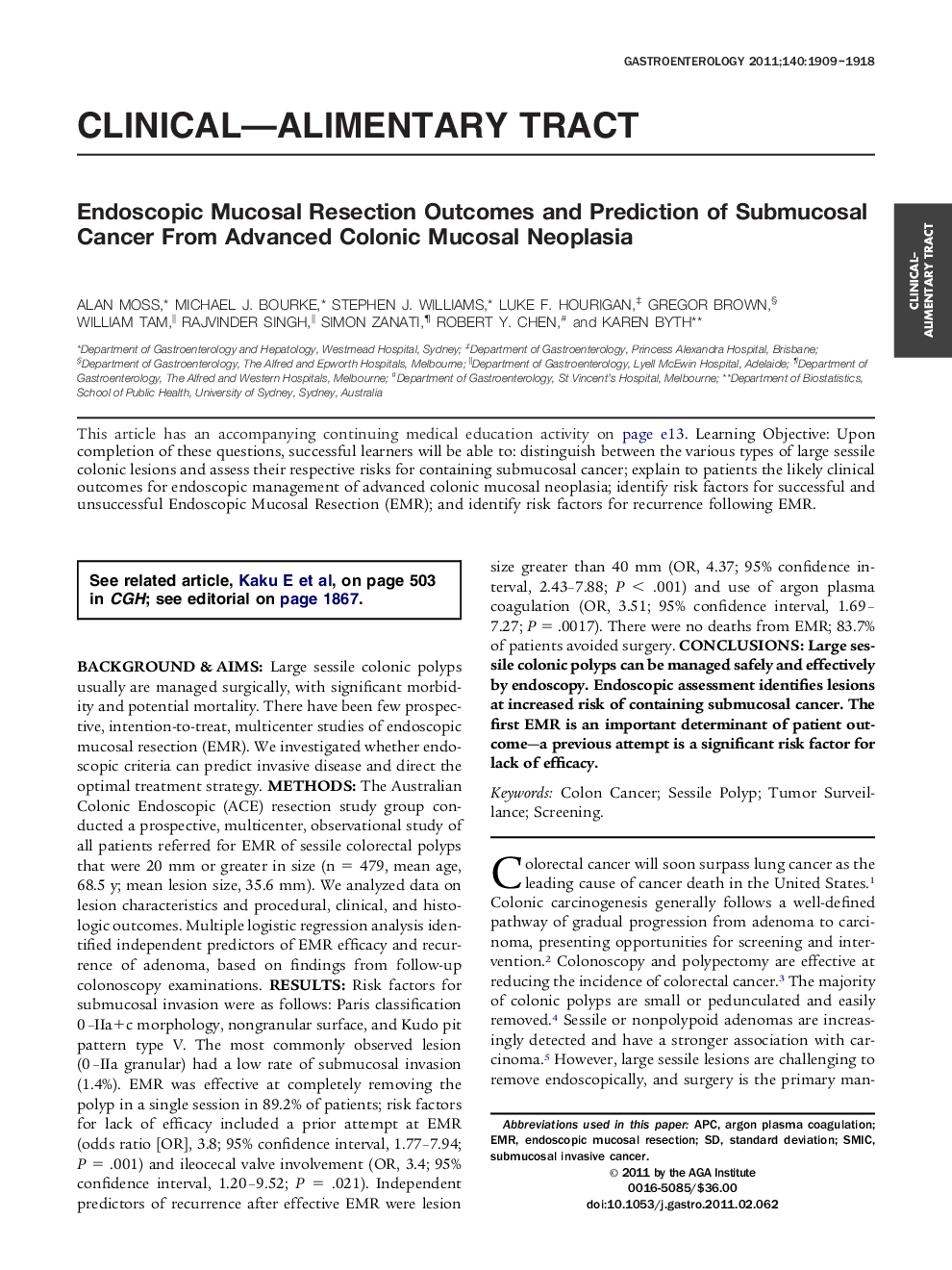| کد مقاله | کد نشریه | سال انتشار | مقاله انگلیسی | نسخه تمام متن |
|---|---|---|---|---|
| 3293013 | 1590039 | 2011 | 10 صفحه PDF | دانلود رایگان |

Background & AimsLarge sessile colonic polyps usually are managed surgically, with significant morbidity and potential mortality. There have been few prospective, intention-to-treat, multicenter studies of endoscopic mucosal resection (EMR). We investigated whether endoscopic criteria can predict invasive disease and direct the optimal treatment strategy.MethodsThe Australian Colonic Endoscopic (ACE) resection study group conducted a prospective, multicenter, observational study of all patients referred for EMR of sessile colorectal polyps that were 20 mm or greater in size (n = 479, mean age, 68.5 y; mean lesion size, 35.6 mm). We analyzed data on lesion characteristics and procedural, clinical, and histologic outcomes. Multiple logistic regression analysis identified independent predictors of EMR efficacy and recurrence of adenoma, based on findings from follow-up colonoscopy examinations.ResultsRisk factors for submucosal invasion were as follows: Paris classification 0–IIa+c morphology, nongranular surface, and Kudo pit pattern type V. The most commonly observed lesion (0–IIa granular) had a low rate of submucosal invasion (1.4%). EMR was effective at completely removing the polyp in a single session in 89.2% of patients; risk factors for lack of efficacy included a prior attempt at EMR (odds ratio [OR], 3.8; 95% confidence interval, 1.77–7.94; P = .001) and ileocecal valve involvement (OR, 3.4; 95% confidence interval, 1.20–9.52; P = .021). Independent predictors of recurrence after effective EMR were lesion size greater than 40 mm (OR, 4.37; 95% confidence interval, 2.43–7.88; P < .001) and use of argon plasma coagulation (OR, 3.51; 95% confidence interval, 1.69–7.27; P = .0017). There were no deaths from EMR; 83.7% of patients avoided surgery.ConclusionsLarge sessile colonic polyps can be managed safely and effectively by endoscopy. Endoscopic assessment identifies lesions at increased risk of containing submucosal cancer. The first EMR is an important determinant of patient outcome—a previous attempt is a significant risk factor for lack of efficacy.
Journal: Gastroenterology - Volume 140, Issue 7, June 2011, Pages 1909–1918